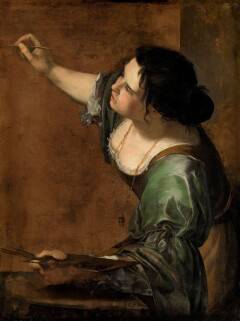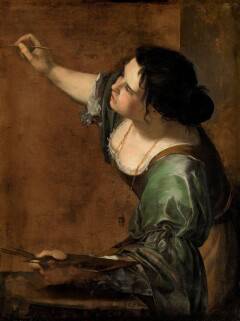
- Afhalen na 1 uur in een winkel met voorraad
- Gratis thuislevering in België vanaf € 30
- Ruim aanbod met 7 miljoen producten
- Afhalen na 1 uur in een winkel met voorraad
- Gratis thuislevering in België vanaf € 30
- Ruim aanbod met 7 miljoen producten
Zoeken
Now you see us
Woman artists in Britain 1520-1920
Tim Batchelor, Tabitha Barber, Carol Jacobi
Hardcover | Engels
€ 57,50
+ 115 punten
Omschrijving
From Tudor times to the First World War, Women Artists in Britain 1520 - 1920 will chart the journey of women to becoming professional artists. From Levina Teerlinc, a miniaturist at the court of Elizabeth I, to Laura Knight, the first woman to be elected a member of the Royal Academy after a gap of more than 150 years, women have been a constant presence in the art world, conducting commercially successful careers and exhibiting in public exhibitions.
Against society's expectations of wives, mothers and daughters, limited to the private domestic sphere, they dared to pursue public careers, and to paint history pieces, battle scenes and the nude, usually regarded as the preserve of men. An examination of figures such as Mary Beale, Angelica Kauffman, Elizabeth, Lady Butler and many more will reveal careers very far from the stereotypical view of women as amateur watercolourists, pursuing art as a ladylike accomplishment. Instead, they are revealed as professional women who navigated the art world despite being excluded from academy training and art institution membership, and who were determined to succeed despite the obstacles they faced.
In English Female Artists, 1876, Ellen Creathorne Clayton wrote that women artists had 'left only but faintly impressed footprints on the sands of time'. In the course of research for Women Artists in Britain, lost, forgotten and overlooked careers have had to be recovered and reconstructed. But through looking at what women painted, how their work was received by exhibition critics, what women said themselves about their status in the art world, including their links to campaigns for women's rights, Women Artists in Britain will shine a spotlight on their true legacy and place in art history.
Against society's expectations of wives, mothers and daughters, limited to the private domestic sphere, they dared to pursue public careers, and to paint history pieces, battle scenes and the nude, usually regarded as the preserve of men. An examination of figures such as Mary Beale, Angelica Kauffman, Elizabeth, Lady Butler and many more will reveal careers very far from the stereotypical view of women as amateur watercolourists, pursuing art as a ladylike accomplishment. Instead, they are revealed as professional women who navigated the art world despite being excluded from academy training and art institution membership, and who were determined to succeed despite the obstacles they faced.
In English Female Artists, 1876, Ellen Creathorne Clayton wrote that women artists had 'left only but faintly impressed footprints on the sands of time'. In the course of research for Women Artists in Britain, lost, forgotten and overlooked careers have had to be recovered and reconstructed. But through looking at what women painted, how their work was received by exhibition critics, what women said themselves about their status in the art world, including their links to campaigns for women's rights, Women Artists in Britain will shine a spotlight on their true legacy and place in art history.
Specificaties
Betrokkenen
- Auteur(s):
- Uitgeverij:
Inhoud
- Aantal bladzijden:
- 224
- Taal:
- Engels
Eigenschappen
- Productcode (EAN):
- 9781849769259
- Verschijningsdatum:
- 27/05/2024
- Uitvoering:
- Hardcover
- Afmetingen:
- 210 mm x 265 mm
- Gewicht:
- 1392 g

Alleen bij Standaard Boekhandel
+ 115 punten op je klantenkaart van Standaard Boekhandel
Beoordelingen
We publiceren alleen reviews die voldoen aan de voorwaarden voor reviews. Bekijk onze voorwaarden voor reviews.











